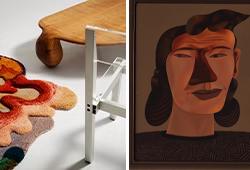A west Anatolian "Lotto" rug, 17th century, ca 133 x 115 cm
A red ground with a stylized arabesque pattern in yellow. A wide dark blue main border with flower vines and large stylized cloud bands.
Wear, dirty, repairs, rewoven areas, minor damages, added and painted areas.
Provenance
From the collection of Adolf Drougge (1867-1956)
Literature
O.Ydema, Carpets and their Datings in Netherlandish Painting 1540-1700, Zutphen, 1991, p.36.
More information
'Lotto' carpets derive their name from the Renaissance painter Lorenzo Lotto, (c. 1480 – 1556). Lotto depicted an example in ‘The Alms of St. Anthony’, 1542, Venice, although they also appear in other and earlier works such as Sebastiano del Piombo's ‘Cardinal Bandinello Sauli’, of 1516. This indicates that the earliest examples are at least from the very early 16th century. The pattern continued to be popular until the late 18th century. The cloudband border design in this rug can be seen in paintings from as early as 1611. The majority being illustrated during the period 1660-70 (O.Ydema, Carpets and their Datings in Netherlandish Painting 1540-1700, Zutphen, 1991, p.36, diag.8.) These indicate that this rug could date from as early as the first quarter of the 17th century.





















































